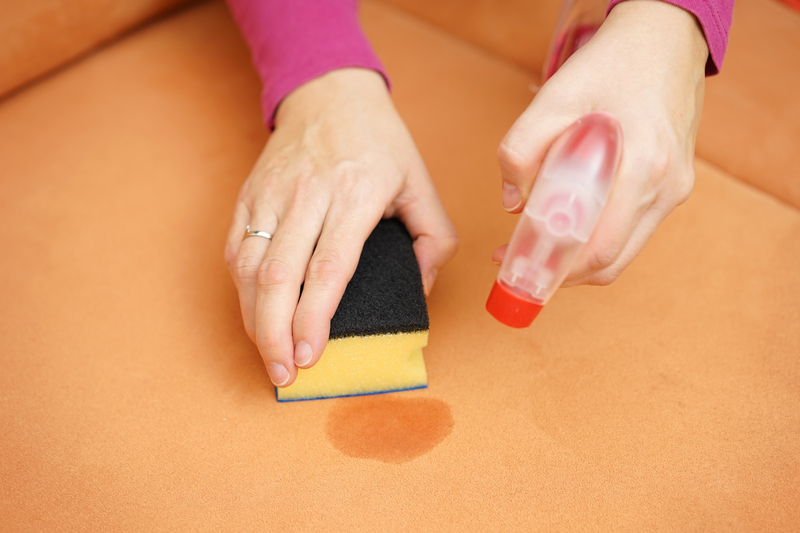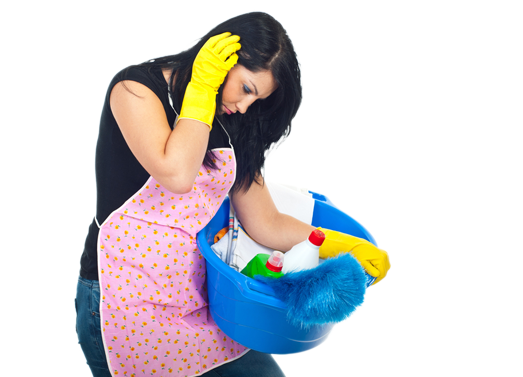Erase Grease with Ease: Your Handbook to Pristine Enamel Oven Trays
Posted on 27/06/2025
Erase Grease with Ease: Your Handbook to Pristine Enamel Oven Trays
Your enamel oven trays are kitchen heroes -- catching juicy roasts, baking delectable treats, and keeping your oven clean. But over time, they can fall victim to the battle with grease, grime, and burnt-on residues. If you're seeking an effective, comprehensive solution for grease removal, you've landed at the right place! This in-depth guide will help you clean enamel oven trays effortlessly, ensuring they remain sparkling for years to come.

Why Pristine Enamel Oven Trays Matter
Wondering why you should invest energy into keeping those enamel baking trays spotless? Here's why a clean tray matters more than you'd think:
- Health and Safety: Caked-on grease harbors bacteria and produces unpleasant odors that can taint your food.
- Improved Cooking Results: Grease and burnt bits affect heat distribution, leading to uneven cooking and charred spots.
- Longevity of Trays: Proper cleaning extends the life of your enameled ovenware by preventing rust and damage.
- Better Aesthetics: Shiny, residue-free trays make your whole oven look brand new and reflect well on your kitchen hygiene standards.
Understanding Enamel Oven Trays
Enamel trays are made from steel or cast iron, coated with a glassy enamel finish. This smooth, non-porous surface resists scratching and staining, but it's not invincible. Acidic spills, harsh scrubbing, or neglect can shorten its lifespan. Cleaning them the correct way will help preserve your enamel bakeware for countless culinary creations.
Common Grease Problems with Enamel Oven Trays
Before you tackle the clean-up, it's crucial to identify the typical issues that plague oven trays:
- Grease Buildup: Layers of old fat harden into a stubborn, sticky residue.
- Burnt-on Food: Roasted meats, cheesy casseroles, or drippy pastries leave behind carbonized bits.
- Staining: Spices, tomato sauces, and sugary glazes can discolor the enamel if left unattended.
- Dull Surfaces: Accumulated grime reduces the tray's natural sheen.
But fear not! These problems are entirely manageable with the right knowledge and cleaning routine. Let's start erasing that grease with ultimate ease!
Erase Grease: Best Methods to Clean Enamel Oven Trays
Step-by-Step Guide to Deep-Cleaning
-
Cool Down and Safety First
- Always let your tray cool before handling. Hot enamel is vulnerable to temperature shock and could crack.
-
Scrape Off Loose Debris
- Use a non-metal spatula or wooden scraper to gently remove burned-on chunks and crumbs before washing.
-
Soak to Loosen Grime
- Fill the tray with hot, soapy water and let it soak for at least 30 minutes. For heavy grease, let it sit overnight.
-
Baking Soda Power
- Sprinkle a generous layer of baking soda over stuck-on stains. Pour a small amount of hot water to create a paste. Let this fizz and penetrate the residue for another 30 minutes.
-
Gentle Scrubbing
- Using a non-abrasive sponge or nylon brush, gently scrub away the grease. Never use steel wool or harsh scouring pads; they scratch enamel!
-
Rinse Thoroughly
- Rinse with warm water to remove all cleaning agents and residue.
-
Inspect and Repeat as Needed
- For persistent stains, repeat the baking soda method or try a specialty enamel cleaner.
-
Dry Completely
- Air dry or use a soft, lint-free towel to prevent water spots and preserve that shiny finish.
Pro Tip:
Mix a little white vinegar with baking soda for extra degreasing strength! Just don't leave acid on the tray for long, as it could etch the enamel over time.
Specialized Cleaning Solutions: Are Commercial Cleaners Safe for Enamel?
Many off-the-shelf oven cleaners are too caustic for enamel and can cause discoloration or even corrosion. For your enamel oven baking trays, always opt for products labeled "safe for enamel" or stick with time-tested household alternatives like:
- Baking soda and water paste
- Dish soap and white vinegar
- Lemon juice (for mild stains, quick action only)
If using any commercial product, test on a small, inconspicuous area first and rinse thoroughly before cooking on the tray again!
Erase Grease with Ease: Tips for Daily Maintenance
Don't Wait -- Clean After Each Use
- Fresh grease is easier to remove than baked-on residue.
- Wipe the tray with a paper towel to remove surface grease before washing.
- Always use mild dish soap and a soft sponge for regular cleaning.
Maintenance Routine for Enamel Baking Trays:
- Preventative Lining: Use parchment paper or a silicone baking mat to minimize direct contact with food and reduce stuck-on messes.
- Immediate Rinsing: After use, rinse trays with hot water before food has a chance to dry and adhere.
- Drying: Enamel trays are less prone to rust, but standing water can create water marks. Dry well after washing.
Handling Stubborn Stains and Grease
Baking Soda & Vinegar Soak
Fill your dirty enamel oven tray with warm water, add half a cup of baking soda, and pour in a splash of white vinegar for fizz. Let sit for an hour, scrub gently, and rinse. This is especially effective for grease stains and burnt-on residue.
Lemon and Salt Treatment
For light discoloration or odors, sprinkle coarse salt on the tray, then scrub with half a cut lemon. The natural abrasiveness and citrus break down grease and restore shine.
For Extremely Stubborn Grease:
- Create a paste of baking soda and a touch of hydrogen peroxide, apply directly to the stained area, let sit for 15 minutes, and then scrub and rinse as usual.
- Repeat as necessary, but always keep your scrubbing gentle!
What NOT to Do When Cleaning Enamel Oven Trays
- Do not use metal scouring pads or steel wool. These will scratch and dull the enamel surface permanently.
- Avoid strong acids or bleach. These harsh chemicals can erode the enamel finish.
- Don't subject hot trays to cold water. Sudden temperature changes may cause cracking or warping.
- Skip abrasive powdered cleansers. These are often too harsh for enamel surfaces.
Eco-Friendly Cleaning for Enamel Oven Trays
Want to keep your kitchen and the planet greener? Natural cleaners are both effective and gentle on enamel while being kind to your home's environment:
- Baking Soda: An all-purpose household cleaner. Absorbs odors and gently lifts stains.
- White Vinegar: Naturally acidic; cuts through grease and kills germs.
- Lemon Juice: Removes light stains, leaves a fresh scent, and acts as a mild natural bleach.
- Salt: Adds gentle scrubbing power without scratching.
Using these ingredients regularly in your cleaning routine for enamel trays will help you erase grease with ease while minimizing chemical exposure in your kitchen.
Frequently Asked Questions About Cleaning Enamel Oven Trays
- Can I put enamel trays in the dishwasher?
Most enamel trays are technically dishwasher safe, but repeated dishwashing may dull their finish over time. Hand washing is recommended for longevity. - Are all oven cleaners suitable for enamel trays?
No, only use products specifically labeled "safe for enamel" or stick to baking soda and gentle detergents. - How do I remove tough burnt-on marks?
A paste of baking soda and water, left to sit and then scrubbed gently, works wonders on tough stains. - Can I use bleach on enamel to whiten it?
Avoid bleach; it can damage the enamel's molecular structure and lead to staining or thinning over time.
Preventing Future Grease Build-Up on Enamel Oven Trays
- Line before you cook: Use parchment or silicon baking mats for messy roasts and bakes.
- Clean immediately after use: Don't allow food stains to dry and harden.
- Regular routine: Make a habit of spot-cleaning with a soft cloth and mild cleanser after every use, even if no visible mess remains.
- Inspect for chips: Chipped enamel may harbor bacteria and make deep cleaning more difficult. Replace trays with compromised enamel.

Why Choose Enamel Oven Trays?
Enamel trays remain the gold standard for all-purpose ovenware because they:
- Are non-porous, resisting odors and common kitchen stains
- Heat evenly for consistent baking and roasting results
- Are easy to clean and maintain compared to untreated metal trays
- Offer a glossy, attractive finish that makes serving and presentation a breeze
Conclusion: Embrace Easy, Effective Enamel Tray Cleaning
There's no need to let stubborn grease and grime defeat your beloved enamel oven trays. With the correct approach and a little regular care, you can erase grease with ease--restoring your ovenware to its beautiful, lustrous best. Use these expert techniques and simple ingredients to ensure your enamel baking trays remain reliably non-stick, stain-free, and stunningly clean for countless meals to come. Make this handbook your go-to guide for pristine, grease-free enamel every time!
Ready to transform your oven trays? Start using these tips today and say goodbye to grease for good!





